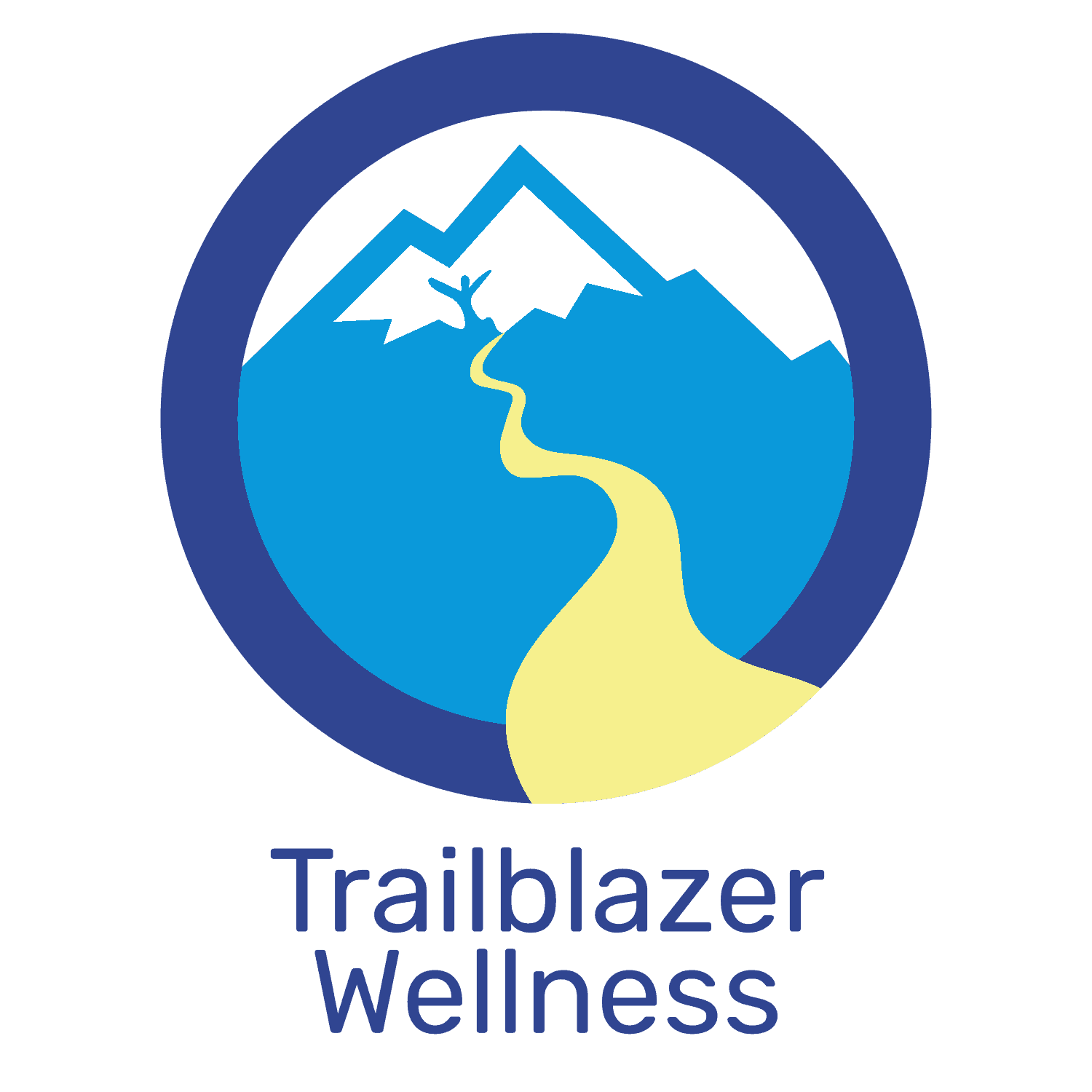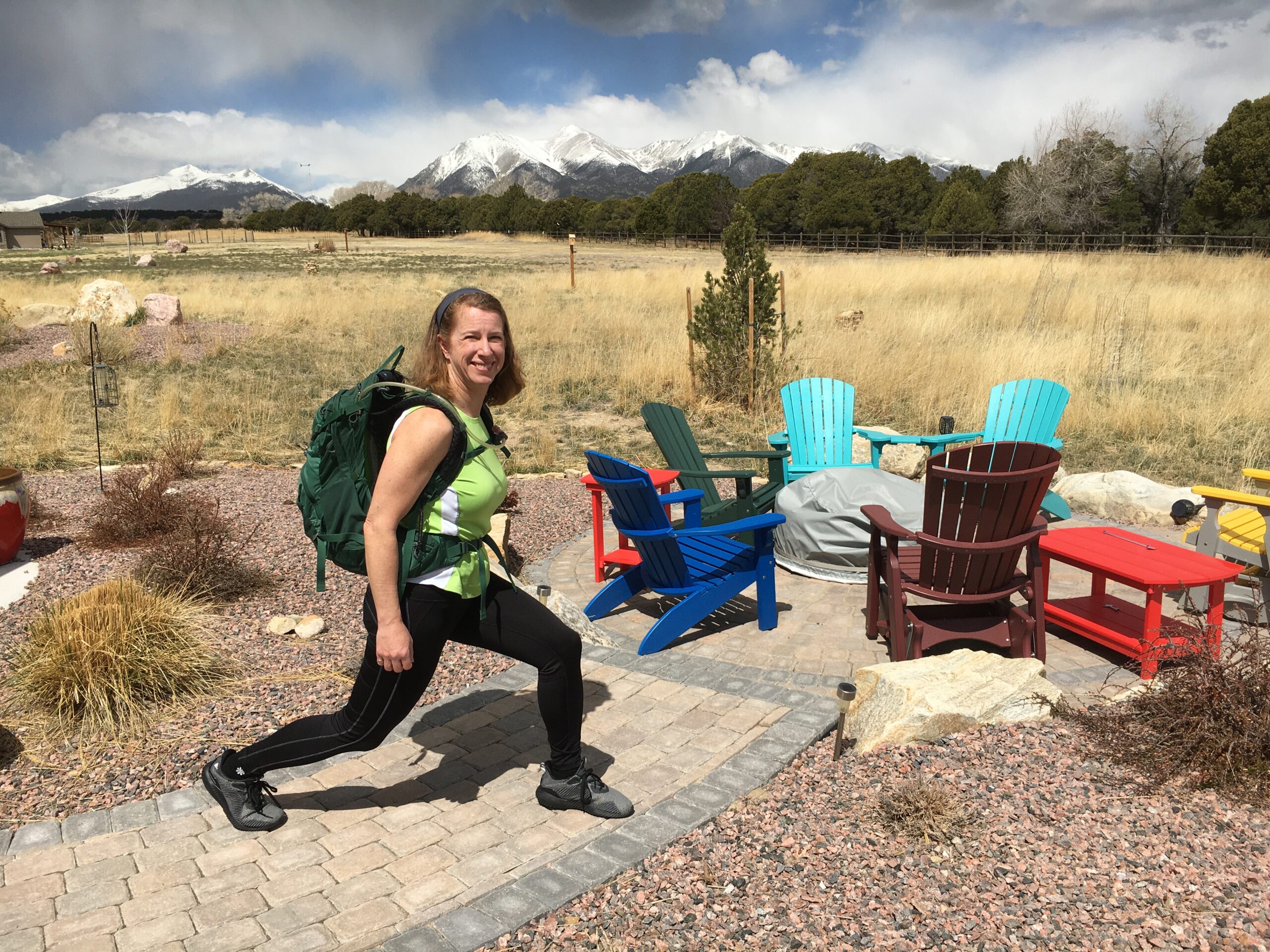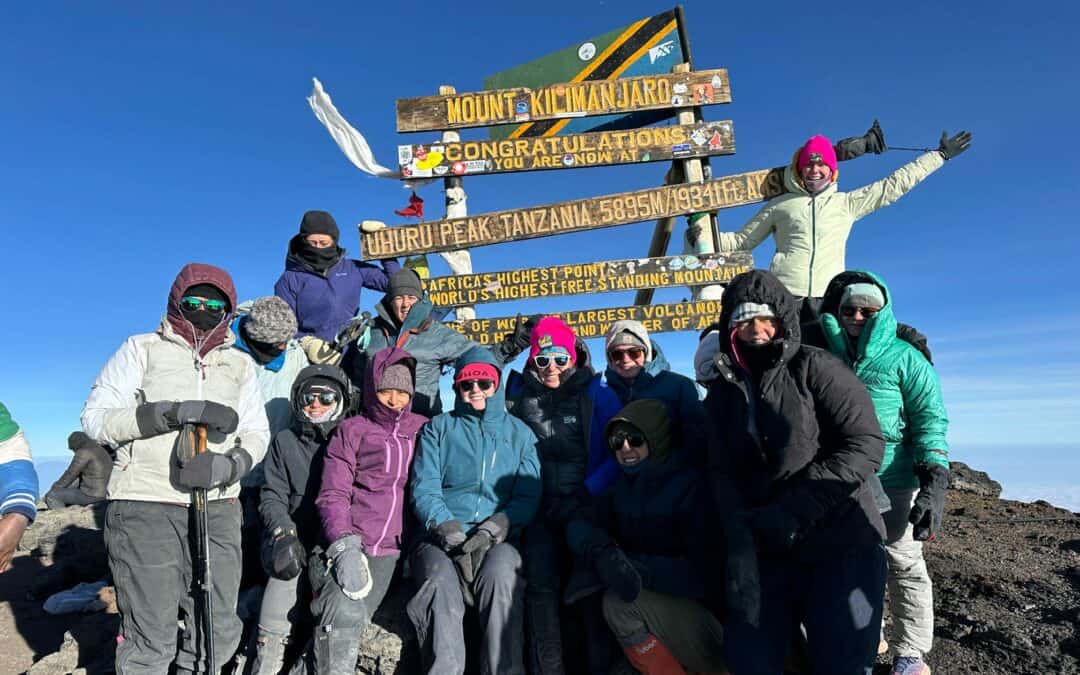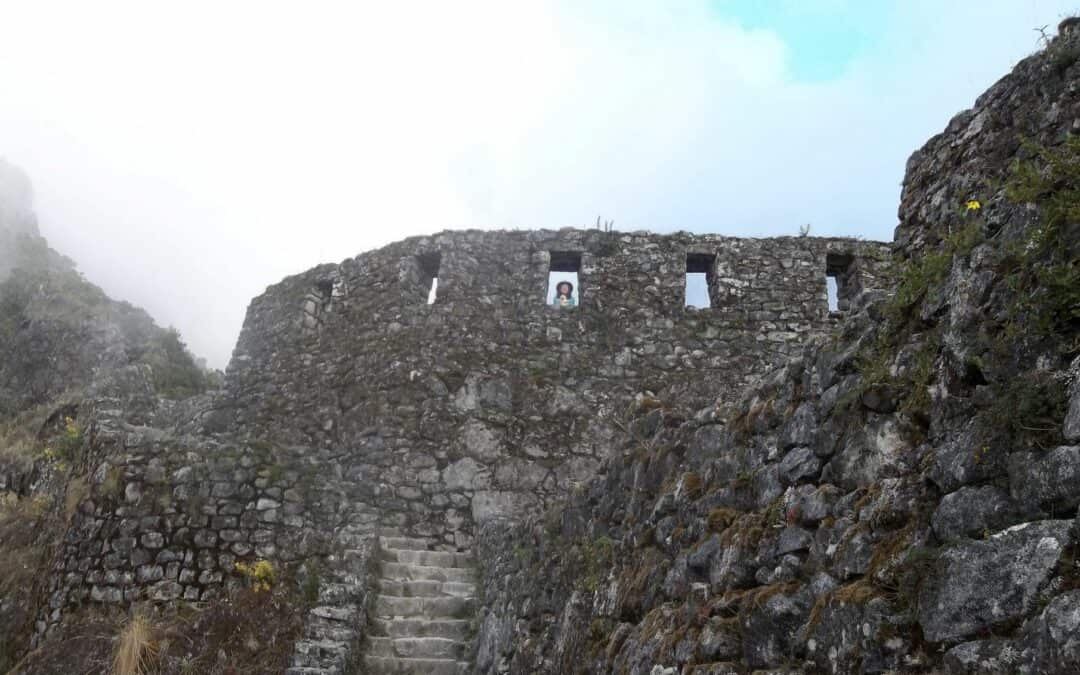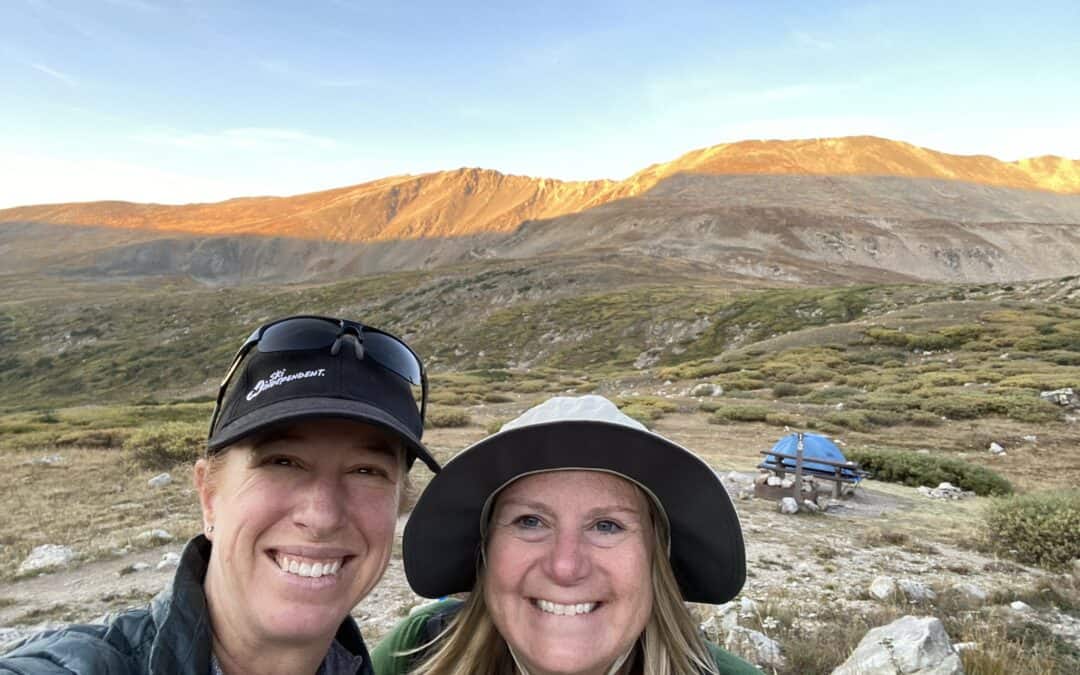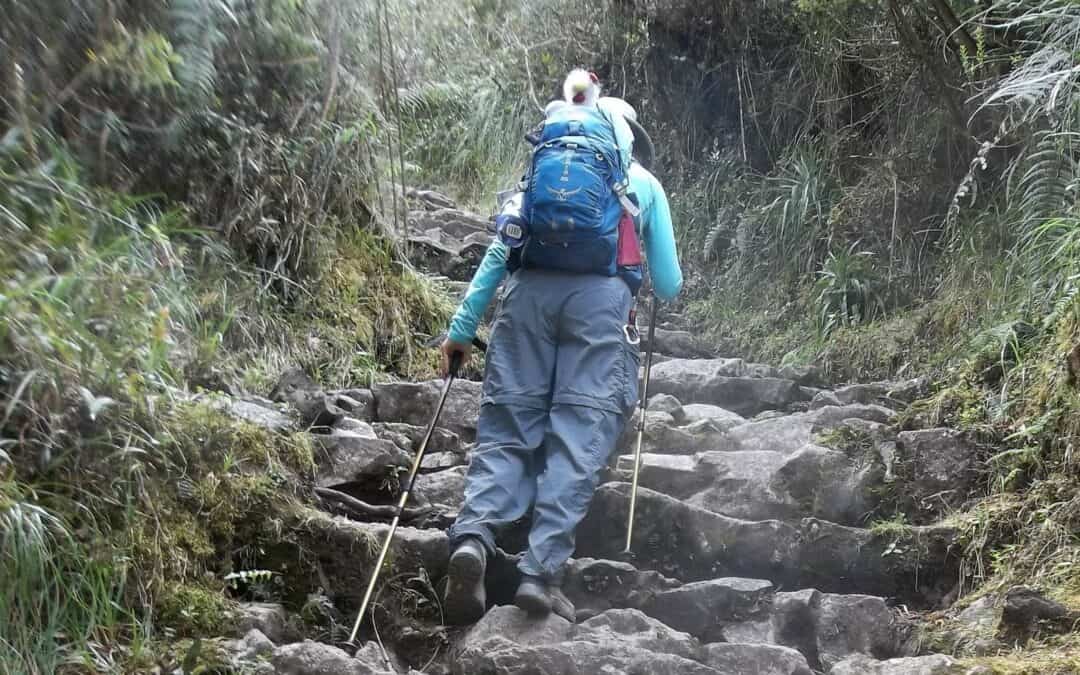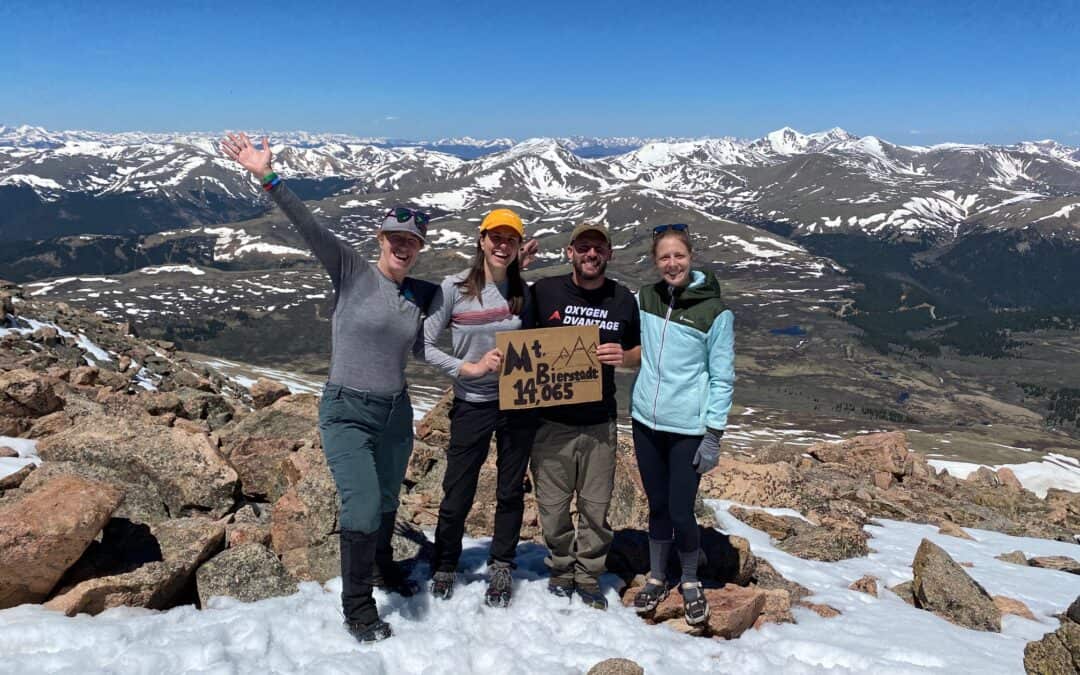
Training for High Altitude: Myths and Facts About What You Can Control
People ask me about how to train for high altitude (above 10,000 feet is usually where the concern kicks in) all the time. Many of my clients are planning trips to high places, and of those, most live at or near sea level.
The good news is that living at low altitude does not doom you to misery when you reach high altitude! Even if you’ve had tough times at higher altitudes in the past, you could have a different experience the next time.
The less reassuring news is that there’s no “magic formula” training plan that will guarantee you’ll be fine at high altitude. At least not that humans have figured out yet.
There are some guiding principles and factors, though, that put the odds in your favor. I’ve explained this using a “backpack analogy” below.
But first, let’s go through a few myths and facts about humans and high altitude.
1: A certain training regimen or fitness level will guarantee you won’t have a hard time at altitude. If you’re fit, you won’t have a hard time at altitude.
Myth! The fact is, anyone can feel the effects of high altitude. Even people who are super fit, including runners and mountain guides, can and do get symptoms such as headaches, nausea, digestive issues, sleep issues and shortness of breath as they reach higher altitudes. I have seen fit people struggle at high altitude firsthand.
Not everyone gets these symptoms, and an individual might feel them on one trip and not another.
Being fit can help the rest of your body feel better during physical exertion at high altitude.
2: If you haven’t had trouble at altitude in the past, you’ll be fine at higher altitude.
Myth! One of my best friends who has climbed more than 100 peaks higher than 13,000 feet suddenly started getting sick when she was sleeping at 10,000 feet or higher. The fact is, various factors can contribute to your likelihood of experiencing altitude sickness.
3: If you have had trouble at high altitude in the past, you’ll always struggle with it.
Not necessarily true. There are some factors that you may not be able to control that can contribute to a higher likelihood of getting sick at higher altitudes. Yet there are others that you can control, so it depends.
4: If you live at sea level, you should use an altitude training mask (also known as an elevation training mask or hypoxia mask) or hypoxic tent or work out in a gym with a high altitude simulation room.
Myth! You don’t have to invest in these tools to prepare for a high altitude adventure. You can, though the impact they have is variable and debatable.
A Backpack Analogy for High Altitude Hiking
Scientists, doctors and others have been studying what happens to the human body as we go to higher altitudes, and why we experience certain symptoms, for a while now. Like most ailments that afflict us humans, it’s complicated.
I’m not a doctor, but I’ve read, seen and experienced a fair amount related to high altitude. I’ve lived and been active in Colorado for 20+ years, though I grew up in Michigan (flatlander!) and lived near sea level for the first 30 years of my life.
I’ve also worked with many clients who have done hiking trips at high altitude, many of whom live at sea level. Many of them have been fine, some of them have struggled.
Here’s a way to think about the factors that contribute to what your experience may be at high altitude.
Let’s say you have a backpack that carries the things that impact how you feel at high altitude. If your backpack is loaded down with too many things, you’ll feel like crap.
And if it’s really loaded down, you might experience life-threatening illnesses such as High Altitude Pulmonary Edema (HAPE) and/or High Altitude Cerebral Edema (HACE).
Some of the items you can control whether or not to include, others are automatically included. Ideally, you keep this backpack as light as possible!
Here are some factors you can’t control:
- Genetics
- Age
- Where you live (unless you’re able to relocate for a while before your trip)
- Health history, especially related to cardiovascular and pulmonary system conditions – asthma, etc.
Some factors you may be able to control include:
- Current medical conditions, with a doctor’s guidance and possibly medication
- Where you train, if you can get to higher altitude frequently
- Early arrival/time at altitude before activity starts (for example, spending 2-3 days relaxing at 10,000 feet before hiking)
- Itinerary – gradual increase in altitude, especially during the first few days of activity
Factors you can control:
- Pre-trip training and fitness level
- How much and what you drink
- How much and what you eat
- Rest
- Stress level
- Pace
Lighten Up Your Backpack: How to Prepare for High Altitude Pre-trip
Before your mountain adventure at high altitude, it can help to be as fit as possible. After all, who wants to have burning quads and cramping calves while they also struggle to breathe?
This does NOT mean doing high intensity interval training sessions every day. In fact, you don’t have to do HIIT at all. If you do, once or twice a week is plenty.
It does mean doing a fair amount of aerobic activity, aka cardio training. Walking, hiking, cycling, etc. all helps build your muscles (including your heart!) to adapt to be able to handle more activity.
Strength training also makes a difference in how your muscles will feel after multiple days of activity. The stronger they are, the more efficient they will be. That’s a plus.
If you want to know more specifics, check out my post “What to do to Train for a Multi-day Hiking Trip.”
Some people have also found that doing pre-trip breathwork training has helped them breathe better and feel more comfortable when they go to high altitude.
If you’re interested in this, check out my favorite breathwork expert Anthony Lorubbio’s program: https://www.recaltravel.com/train-for-altitude-with-breathwork/
Lighten Up Your Backpack: What to Do at High Altitude
The day has arrived for you to start your high altitude adventure – yay!
What you do during the trip can set you up for a better chance of success too.
If you’re with a good guide company, they should be encouraging these behaviors. If you’re doing a self-guided trip, plan to check in with yourself and your companions on these points.
- Drink plenty of water. Your pee should be pale yellow, barely more color than water. As an example, I drank about 4 liters of water a day during my Kilimanjaro climb.
- Eat regularly, mostly carbs, when hiking. Carbs are the fuel your body can most quickly convert to energy, which is especially critical as you ascend to higher altitudes. Loss of appetite can kick in during exercise, especially at high altitude. You still MUST EAT!
- Walk/hike slowly as much as possible. This might be tricky depending on how many people you’re with, how many guides you have, and your itinerary. If you go too fast for your body, though, you’re adding to your “altitude backpack” load.
- Sleep and relax at least as much as usual, if not more, when you’re not hiking. Your body needs time to recover and manage the additional stress of high altitude conditions.
- Minimize stress. You may need to tap into various tools in your stress management toolbox, such as breathwork techniques, mindfulness, journaling, listening to music, reading, whatever helps you relieve stress (except additional exercise).
Obviously there’s a lot more to the high altitude hiking equation. But I hope this gives you some ideas, and possibly comfort, about what you can do to improve your odds of enjoying your trip!
Want to talk about your upcoming high altitude trip and your specific situation? Set up a free 30-minute consultation!
